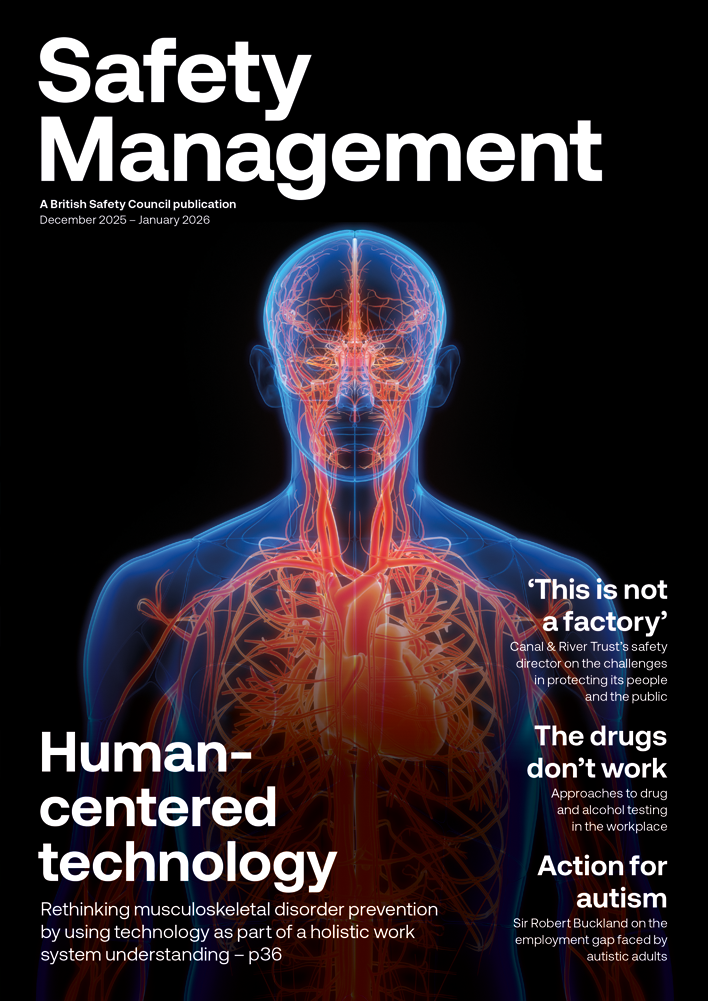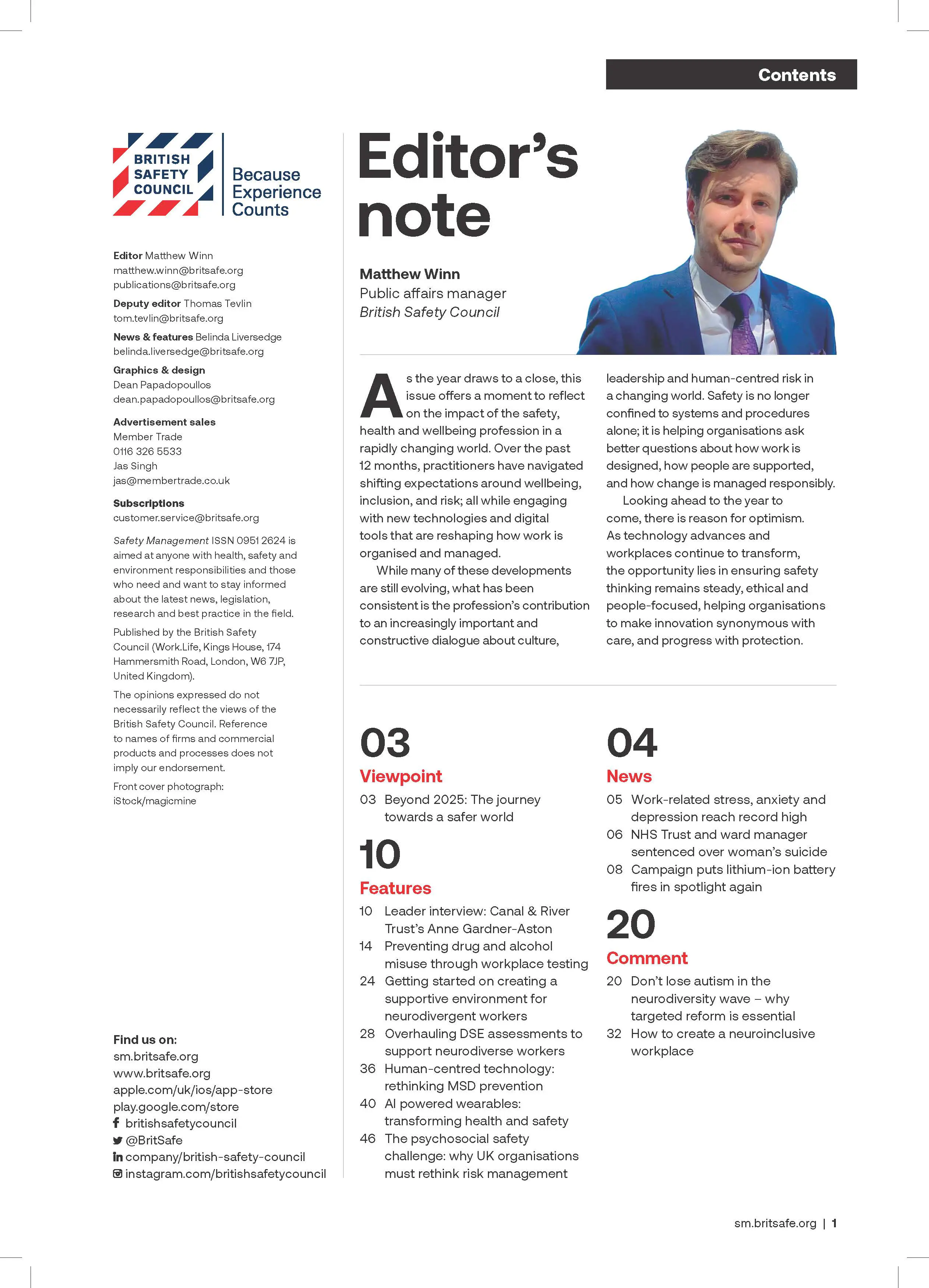The sudden and alarming appearance of silicosis cases among engineered stone workers in the UK, against the backdrop of a ban in Australia and in some US States, has suddenly brought the question of how to regulate for health protection in the workplace to the fore.
Opinion
Engineered stone worktops and silicosis: a challenging problem
We have long known that respirable crystalline silica (RCS) exposure leads to respiratory disease and that very high exposures accelerates that process to months rather than decades. We also know that SMEs routinely fail to put into place even rudimentary controls to prevent exposure for their workers and we see the huge burden of disease that this causes.
 Photograph: iStock/cagkansayin
Photograph: iStock/cagkansayin
Engineered stone, especially products with extremely high respirable silica content, has rapidly increased in popularity as a consumer product, particularly for kitchen work surfaces. Existing masons and kitchen fabricators have been joined by new producers and suppliers as our demand for shiny hard surfaces increases.
There is also controversy about what the exposure limit for RCS should be and potential divergence with other countries. At the same time, there are marketeers intent on selling measurement equipment to undertake real time monitoring, promising instant results to prompt instant control.
On the other side, there is a consumer market that really is not bothered about the lungs of stonemasons in Italy, artificial stone manufacturing workers in Spain or those cutting and finishing the UK. When the health cost of any stone kitchen worktop in their life-cycle is balanced against the convenience of a heat-resistant, scratch-proof, pretty surface, the cost in lives weighs light. Whether the number of people getting ill through silicosis is any less when hand-quarried stone has been imported from a less-developed country than when stone with artificially high silica content is finished by migrant workers in a developed economy is questionable.
Duty of care
As a lawyer, I can’t help looking at everything through the lens of law. Employers owe a duty to take at least reasonable care (under civil and health and safety law) not to make their employees ill through work. There is less concern about the health of those in the supply chain.
In regulatory contexts, that duty of care to employees is to go so far as is reasonably practicable, balancing off the ‘sacrifice’ made by the employer (money, cost and inconvenience) against the risks to the worker of not acting. The sacrifice expected gets greater as the likelihood of harm increases. While there is a known hazard in RCS exposure, the likelihood of illness among those working with high silica stone, including engineered stone, has been known for decades. The expected ‘sacrifice’ for this should be commensurately higher, but the traditions of stone-working don’t embody this sort of control.
Up to 30 per cent of masons, working with high silica stone, but without significant controls, were reported as having incidences of silicosis in studies dating from the 70s. These pre-date better diagnostic rates and higher silica-containing modern substances, so the risk is probably even higher. Cases of accelerated silicosis, notorious at least from the era of the Hawk’s Nest tunnel disaster, highlight the need to be medically vigilant for the first signs of silicosis in high-risk communities within months of commencing work. Misdiagnosis of silicosis and the absence of symptoms are well-understood, so the need for high quality medical imaging for diagnosis is also known.
That we have instances reported in the UK (and more to come) of silicosis amongst those working with substances where the risk of RCS-induced disease is high can hardly be a surprise. The facts speak for themselves: the industry has not brought in occupational hygiene expertise to support it; official guidance to the industry has been buried; and health surveillance has not been engaged because of the scaling up of the engineered stone industry, while health surveillance RCS imaging guidance is largely ignored by occupational health providers.
Updated HSE guidance
BOHS has been highlighting these issues to the Health and Safety Executive (HSE) and to the All-Party Parliamentary Group (APPG) for Respiratory Health since 2021 when the market from engineered stone increased by 70 per cent. The APPG raised these issues with the government finally in March 2024 and HSE updated its guidance on RCS to be more explicit about the duties of the worktop industry in May 2024.
While I always get the sense that BOHS viewpoints are given a sympathetic, courteous and respectful hearing by HSE field and science teams, HSE policy is very slow to shift and are more responsive to issues raised by MPs, ministers and on social media than to scientific opinion, wherever that comes from. Perhaps that’s the reality of being a modern arms-length agency, but as a public lawyer, I do wonder whether that undermines the whole point of the agency being arms-length.
However, it is fair to say that the actual scientific knowledge about the nature of the hazard inherent in engineered stone has not progressed significantly in recent years. But then when, despite our turned heads, the evidence of a problem becomes one we cannot ignore, with the current cases and a backlog of misdiagnosed or overlooked cases coming to the fore, we suddenly feel the urge to act. In Australia, model legislation provides a template for authorities to ban any engineered stone with more than one per cent silica in the form of benchtops, slabs and panels. Tiles, other products, repairs and removals are not banned, but are regulated more tightly.
It’s a move, in itself, to be lauded. Any movement that places the health of workers above the wealth of the already wealthy or trivial cosmetic desires is to be applauded, as is the work of campaigners, scientists and policy-makers. I genuinely hope that this will make a real difference.
‘Low silica’ engineered products
In the Australian engineered stone market, manufacturers have been quick to move to ‘low silica’ engineered products. Unfortunately, these are the same manufacturers who raced to the market with high silica products, sometimes without any concern for the known health risks associated with producing those. The low silica products turn to the same binding agents as used in engineered stone and use other forms of silica, rather than crystalline silica.
 Kevin Bampton is chief executive at British Occupational Hygiene Society (BOHS). Photograph: BOHS
Kevin Bampton is chief executive at British Occupational Hygiene Society (BOHS). Photograph: BOHS
Vendors in Australia have also quickly moved back to natural products, such as Brazilian quartzite, which has up to 90 per cent natural quartz content. This is unsurprising since Brazil has 95 per cent of global quartz mining deposits. However, Brazilian mines also have up to 38 per cent of reported instances of silicosis, with NR22, the regulatory framework for health and safety in Brazilian mines, offering little protection to workers. SME migrant stone workers in Australia may well move to these products with the same issues of absence of control as before and so the circle starts over again.
The relatively rapid implementation of a ban, with no guarantee of money back for consumers who have pre-purchased materials and with remaining stock in the system, present challenges in the regulation of supply. It will be interesting to see how simple re-labelling of slabs can be prevented and how sweatshops oblivious to other legislation will be prevented from buying up now illegal engineered stone and selling it on to customers who want a bargain. I have no doubt that the Australian regulators have a plan to address this, but in the UK, these would be predictable problems.
Bans difficult to implement successfully
The discipline of regulatory science, which lies between law, sociology and criminology, tries to understand how rules can affect social regulatory change. It’s a difficult area because human behaviour has so many more influences than the words on regulatory paper. Bans are really problematic because they are very hard to implement successfully, especially if they are cliff-edge bans, rather than as the culmination of gradual extinction.
Typically, criminal enterprises are fastest to adapt to bans and often exploit illegality to secure financial advantage. Conversely, because of the absolute nature of bans, regulators struggle to actually enforce bans, relying instead on public compliance to ensure that a ban works. Because of this, bans tend to be effective where the majority of law-abiding people are able to recognise the banned product, agree with the ban and comply and the product does not have a significant foothold or value to criminal enterprises.
Effective identification and corresponding restrictions in the movement of items are also crucial. It is relatively easy to identify if a person is smoking, harder to determine if they are slightly over the blood alcohol limit, harder still to determine their age at the time of purchase of an age-restricted product, near impossible to differentiate asbestos-containing brake pads from international drop ship firms etc.
Political will
Political will is also an important dimension, but the desire of politicians to put in place tough restrictions is often a means of deflecting responsibility for dealing with harder underlying questions. The Dangerous Dogs Act and subsequent breed-specific restrictions is the standard example that law students will encounter. Its effectiveness in reducing injuries as a result of ‘dangerous dogs’ is hard to establish and its enforcement, especially amongst a criminal community which then exploits notoriety is a case study in unintended consequences.
The trade in asbestos was banned in the UK, although stocks of asbestos and the reuse of plant and machinery continued for several years into the ban, both legally and illegally. Imported materials can be certified as ‘asbestos free’, but depending on country of origin can contain up to 10 per cent asbestos content, where there is a requirement to stipulate content, or, if imported from some major manufacturing countries may not specify asbestos content at all.
In the case of silicosis and engineered stone, BOHS’s current position, as with HSE, is one of an informed reasonable hypothesis. Barring the health effects of other constituents, then is there any reason to treat an engineered quartz at 90 per cent as different from a natural quartz at 90 per cent?
At present the scientific evidence is not there. However, BOHS is investigating whether the material properties derived from the manufacturing processes may be a factor. There are initial indications that there is potentially a difference which might mean that controls may be less effective on engineered stone than on natural stone.
There are behavioural questions about mixing high and low silica stone forms within a standard production process. Different colours within the same product group can have high variations of silica content. The same product will be fabricated with using the same controls, but may result in vastly different exposure levels. We do have evidence that masons working with lower silica products are used to lesser levels of protection. The industry largely works to standards which are appropriate to natural stone finishing, but there is insufficient awareness of the elevated level of risk from high silica materials.
Regulatory gap
A regulatory gap exists. The industry has not been a big enough area of risk to attract significant regulatory attention and some parts are in the grey or black market, beyond the reach of regulatory bodies. Measures such as health surveillance have not been clearly signposted as being required of engineered stone workshops, while occupational health providers have steered duty-holders away from the use of medical imaging, which is essential to catch early stages of the disease (when properly analysed). The regularity of health surveillance imaging is set too infrequently in any case to catch high risk silicosis exposure.
So, should we ban engineered stone in the UK, while allowing continued use of other high silica materials? My personal view is that any dry processing of any high silica containing materials (above, say 70 per cent, or where it is likely to contain silica, but the content is unknown) should be impermissible under Schedule 2 of COSHH.
This would include natural quartzite, some styles of engineered stone and some speciality concrete and tile products. Even with water suppression, containment and additional measures to reduce exposure in mists should be required.
Further research should be undertaken urgently to understand whether there are specific properties of engineered stone which create additional risk. Restricting the demand and supply of high silica materials should provide the economic stimulus to encourage alternative products and start the gradual process of reducing the huge health burden created by our age-old love of silica-based products.
Kevin Bampton is chief executive at British Occupational Hygiene Society (BOHS).
New BOHS guidance, Silica dust: Risks when working with engineered stone, is at:
OPINION

How to create a neuroinclusive workplace
By John Robinson, Schofield Sweeney on 09 December 2025
The modern workplace is a diverse environment. Most workforces will be made up of individuals representing the majority of the groups protected under the Equality Act 2010.

Don’t lose autism in the neurodiversity wave – why targeted reform is essential
By Rt Hon Sir Robert Buckland KBE KC on 03 December 2025
Autistic adults have waited too long for meaningful reform. They have shared their experiences and expertise. Now they deserve action, accountability, and transformation.

Inclusion saves lives: embedding equality, diversity and inclusion (EDI) into global occupational safety and health
By Umer Changaiz, CMIOSH on 03 December 2025



